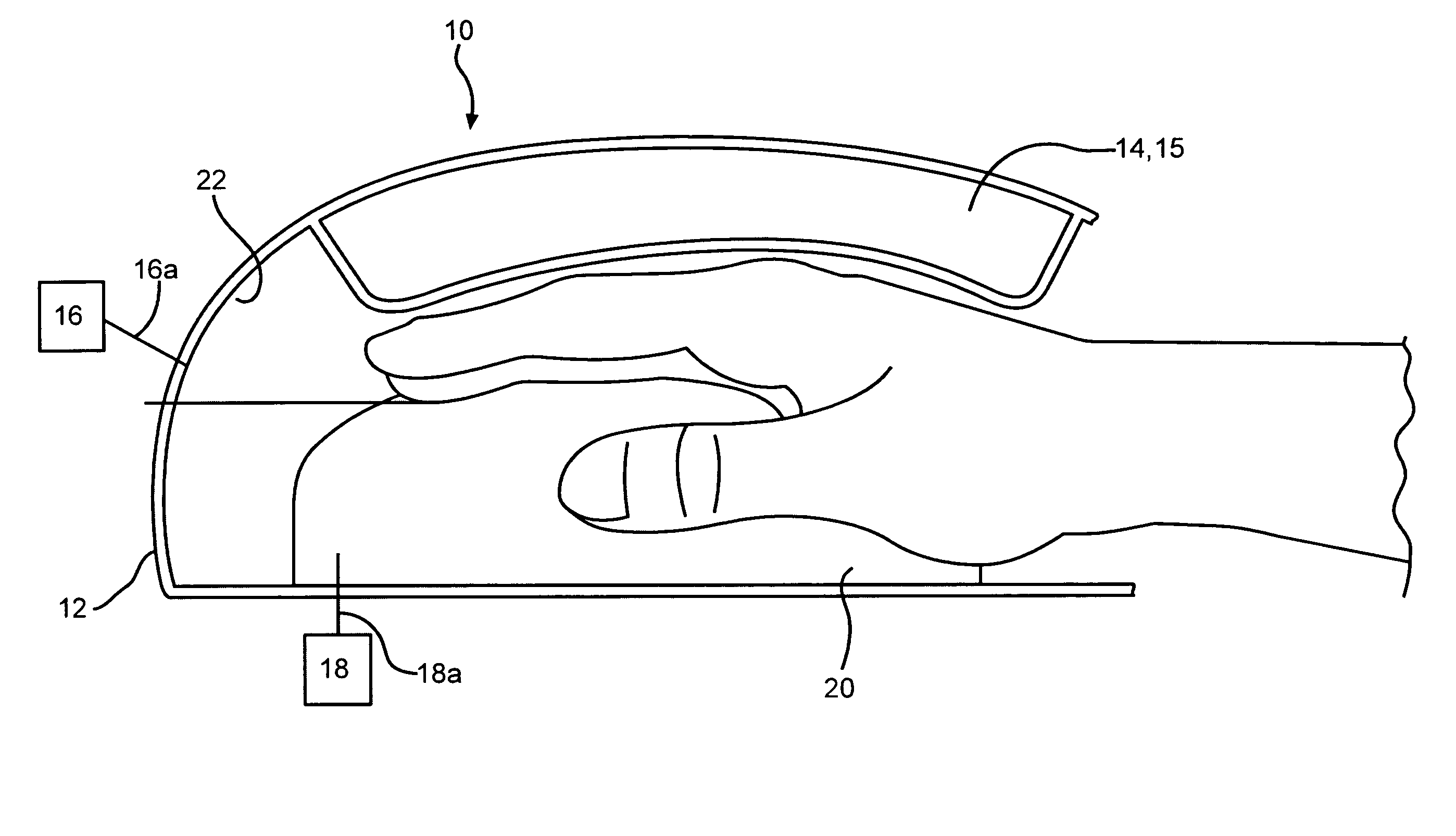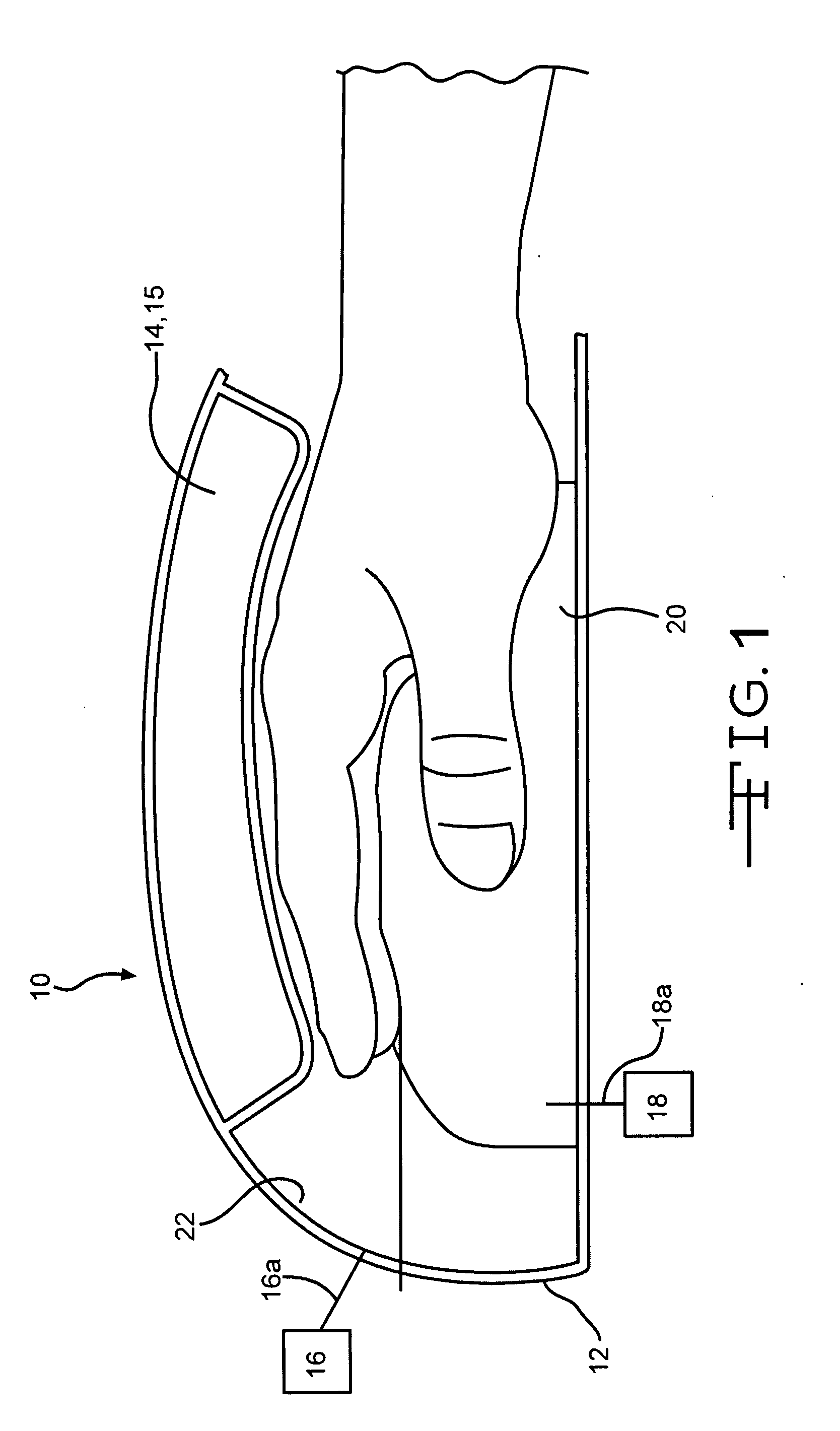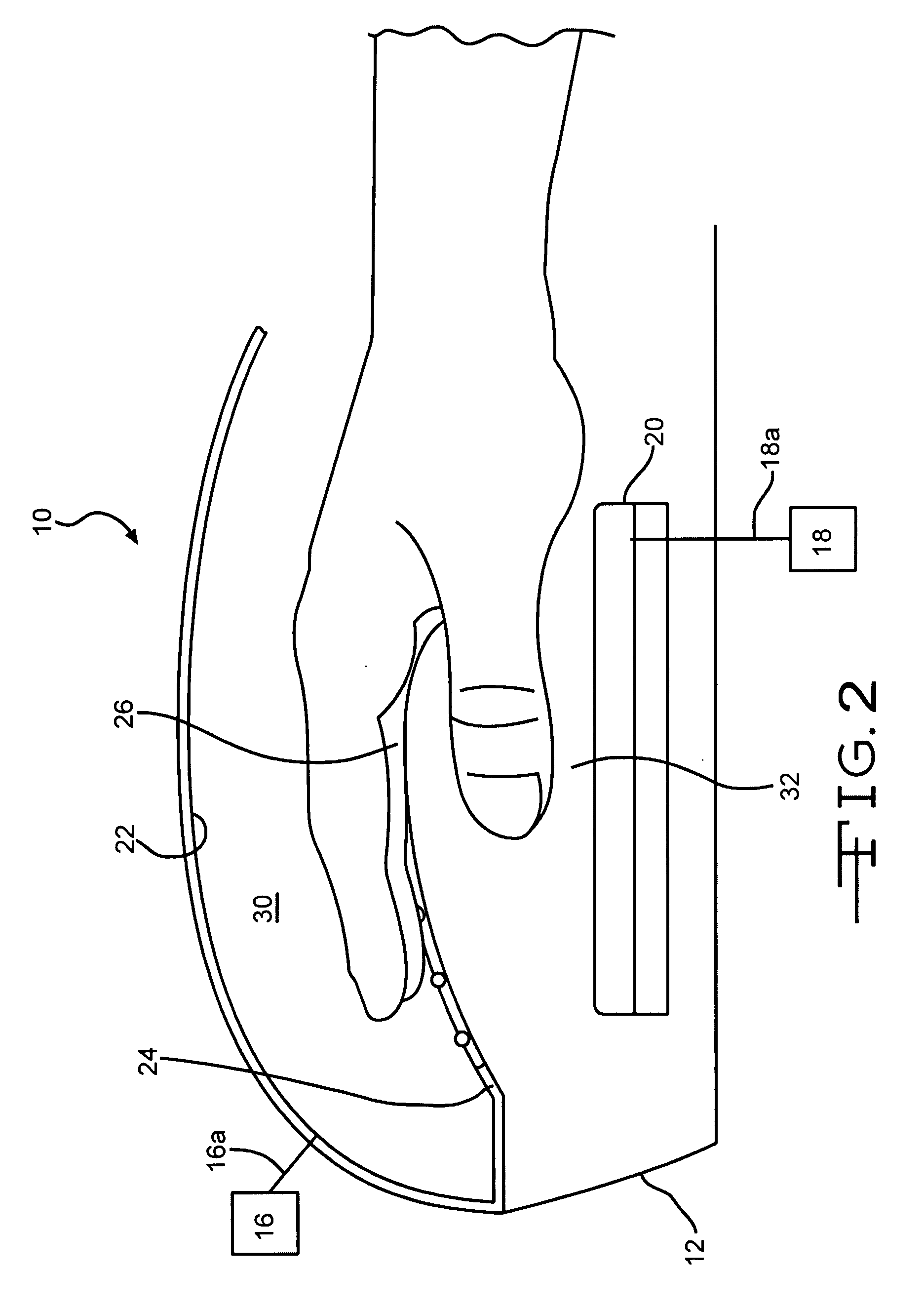Heat transfer device: seal and thermal energy contact units
a technology of contact unit and heat transfer device, which is applied in the field of negative pressure and thermal energy transfer unit, can solve the problems of tightening effect, leakage of seal or passing air at the user/seal interface, and inability to maintain a complete seal
- Summary
- Abstract
- Description
- Claims
- Application Information
AI Technical Summary
Benefits of technology
Problems solved by technology
Method used
Image
Examples
first embodiment
[0028]A first embodiment of the negative pressure, thermal energy device 10 is illustrated in FIG. 1. In FIG. 1, the thermal energy contacting element 20 has a symmetric design to accommodate both small and large hands, and can have a fluid and / or a resistor system. The seal is a critical element in this embodiment.
[0029]The seal 14 is a bladder seal 15. The bladder seal 15 and the thermal energy contacting element 20 are positioned in the interior of the enclosure 12. In particular the bladder seal 15 and the thermal energy contacting element 20 are positioned on the opposite sides of the interior surface 22 of the enclosure 12, as illustrated in FIG. 1. The bladder seal 15 receives a fluid at a predetermined pressure. Preferably the predetermined pressure in the bladder seal 15 is around 32 mmHg.
[0030]The bladder seal 15 inflates to the predetermined pressure when the patient's venous plexus area is properly positioned on the thermal energy contacting element 20.
[0031]The fluid in...
second embodiment
[0035]FIG. 2 illustrates variations of the enclosure 12 and the thermal energy contacting element 20. The enclosure 12 has the interior surface 22, and extending from the interior surface 22 is a mezzanine layer 24.
[0036]The mezzanine layer 24 divides the enclosure's 12 interior into two sections. The first section 30 receives the patient's body portion. The second section 32 contains the thermal energy contacting element 20. The thermal energy contacting element 20 can be (a) a light source that radiates heat having a narrow or a broad band of non-ionizing light (500 to 2000 nm), or (b) a cold source, for example, dry ice, that extracts thermal energy from the patient's venous plexus area.
[0037]The mezzanine layer 24 is a material that allows the radiant thermal energy from (a) the thermal energy contacting element 20 to pass through it or (b) the patient's venous plexus area to pass through it.
[0038]The light source embodiment, on first blush, may seem similar to the prior art's h...
third embodiment
[0042]The third embodiment is illustrated in FIG. 3. The third embodiment is similar to the second embodiment. A difference between the third and the second embodiments is that the thermal sensors 26 are embedded and / or attached to a fitting material 34 (for example, a glove, a mitten, and / or a sock) positioned over the patient's body portion that enters the enclosure 12. In particular the thermal sensors 26 are positioned next to the patient's venous plexus area as illustrated in FIG. 3.
[0043]Preferably, the first fitting material 34 is a black material to retain the thermal energy transferred to the patient.
[0044]In addition, a slight negative pressure from the vacuum system 16 though conduit 16b could be applied to the interior portion of the first fitting material 34. The conduit 16b could have, or not have, valves and check valves to ensure the pressure in the first fitting material 34 is the same or different from the negative pressure in the first section 30 of the enclosure ...
PUM
 Login to View More
Login to View More Abstract
Description
Claims
Application Information
 Login to View More
Login to View More - R&D
- Intellectual Property
- Life Sciences
- Materials
- Tech Scout
- Unparalleled Data Quality
- Higher Quality Content
- 60% Fewer Hallucinations
Browse by: Latest US Patents, China's latest patents, Technical Efficacy Thesaurus, Application Domain, Technology Topic, Popular Technical Reports.
© 2025 PatSnap. All rights reserved.Legal|Privacy policy|Modern Slavery Act Transparency Statement|Sitemap|About US| Contact US: help@patsnap.com



